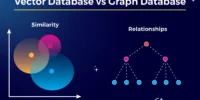Enterprises today are inundated with vast amounts of data, and the need for efficient storage, processing, and analysis has given rise to the concept of data lakes. Data lakes serve as centralized repositories that store structured and unstructured data at scale. However, managing data lakes effectively requires strategic planning and execution. In this guide, we’ll demystify the complexities of data lakes and provide quick tips for their efficient management.
1. Define Clear Objectives and Use Cases
Before diving into data lake management, define clear objectives and use cases. Understand the specific business goals you aim to achieve through the data lake. Whether it’s advanced analytics, machine learning, or business intelligence, align the data lake architecture with the intended use cases.
2. Choose the Right Architecture
Selecting the appropriate architecture is fundamental to effective data lake management. Consider factors such as storage options, data processing engines, and integration capabilities. Common architectures include on-premises solutions, cloud-based solutions, or hybrid approaches. Choose based on your organization’s requirements and scalability needs. ⚙️
3. Data Governance is Paramount
Implement robust data governance practices to ensure data quality, security, and compliance. Define clear data ownership, establish data quality standards, and enforce access controls. A well-governed data lake is more likely to deliver accurate insights and maintain regulatory compliance. ️
4. Metadata Management for Discoverability
Implement a comprehensive metadata management strategy to enhance data discoverability and understanding. Metadata provides context about the data stored in the lake, including its source, structure, and lineage. This information is crucial for data scientists and analysts seeking to understand and utilize the available data.
5. Scalable Storage Solutions
Choose scalable storage solutions that accommodate the growing volume of data. Cloud-based storage options like Amazon S3, Azure Data Lake Storage, or Google Cloud Storage provide elasticity and cost-effectiveness. Regularly assess storage needs and optimize based on usage patterns.
6. Data Lifecycle Management
Implement data lifecycle management strategies to handle data from creation to deletion. Define policies for data retention, archiving, and deletion to optimize storage costs and ensure compliance with data regulations. Automated tools can assist in managing the data lifecycle efficiently. ⏳
7. Security Measures for Data Protection
Prioritize data security to protect sensitive information stored in the data lake. Implement encryption for data in transit and at rest, enforce access controls, and monitor user activities. Regularly audit security measures to identify and address potential vulnerabilities. ️
8. Use Complementary Technologies
Explore complementary technologies that enhance data lake capabilities. Integrating technologies like Apache Spark for data processing, Apache Hive for SQL queries, and Apache Hadoop for distributed computing can boost the functionality and performance of your data lake.
9. Continuous Monitoring and Optimization
Establish continuous monitoring processes to track data lake performance and resource utilization. Regularly optimize storage, processing, and retrieval mechanisms based on changing data patterns. Utilize monitoring tools to identify bottlenecks and areas for improvement.
10. User Training and Collaboration
Invest in user training programs to empower teams with the skills to navigate and leverage the data lake effectively. Foster collaboration between data engineers, data scientists, and business analysts to ensure cross-functional understanding and utilization of the data lake’s potential.
Conclusion
Effectively managing a data lake requires a combination of strategic planning, robust governance, and the right technological choices. By following these quick tips, organizations can demystify the complexities surrounding data lakes and harness their full potential for informed decision-making and innovation. Dive into the world of data lakes with confidence and unlock the transformative power of your data!








